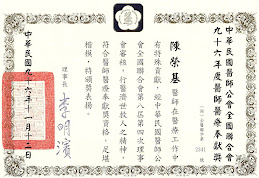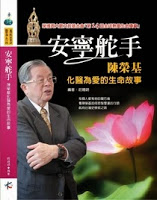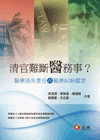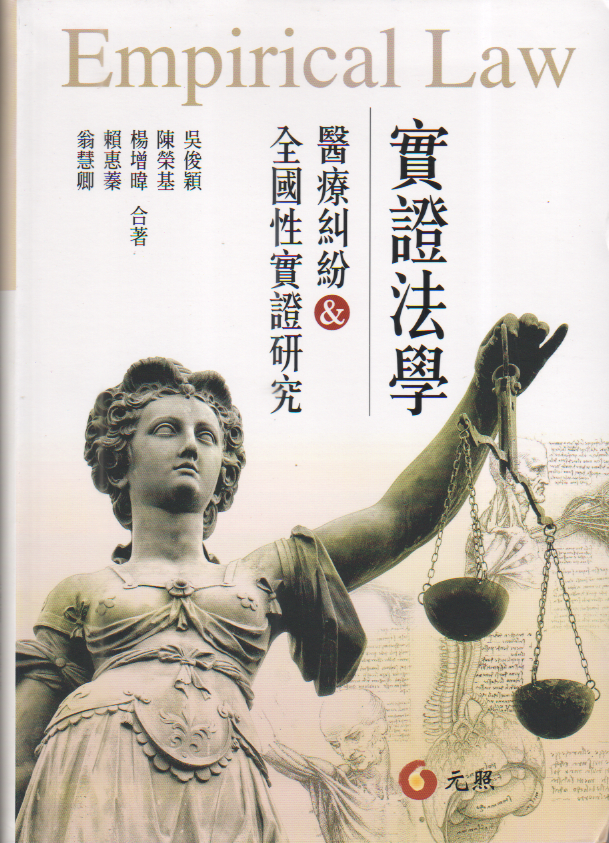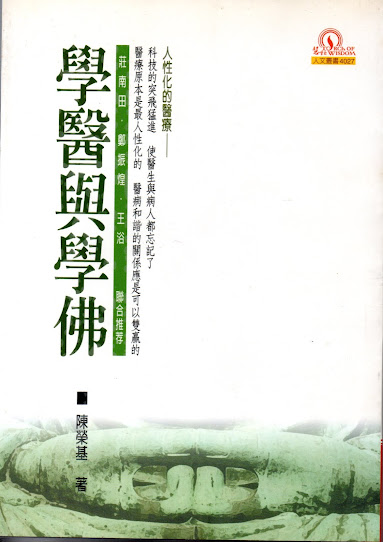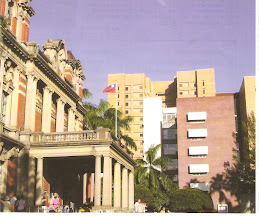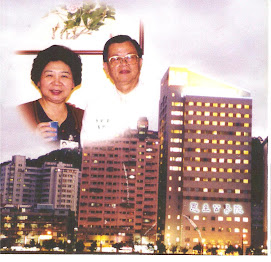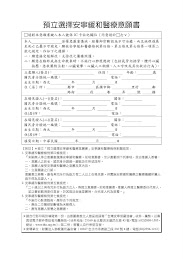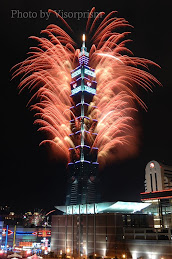Buddhist
Approaches to Dying and Hospice Care in Taiwan
Jonathan Watts
A Public Symposium sponsored by The
Dharma Drum Institute of Liberal Arts
in conjunction with
The International Network of Engaged Buddhists (INEB) 18th General Conference
in conjunction with
The International Network of Engaged Buddhists (INEB) 18th General Conference
November 22, 2017
Dharma Drum Mountain Temple
Dharma Drum Mountain Temple
One of the
outstanding examples of Taiwanese Engaged Buddhism is the development of Buddhist based hospice care and the
training of ordained sangha members in psycho-spiritual care for patients,
family, and other caregivers. Such training mirrors older movements found in
Western Europe and the United States, such as Clinical Pastoral Education
(CPE), which come out of largely Christian cultural contexts. In Asia, however,
there has been a need for approaches to dying and hospice care more suitable to
Buddhist cultural contexts.
In the mid
1990s, Prof. Dr. Rong-chi Chen, the former Vice Superintendent of National Taiwan
University Hospital (NTUH), appointed Ven. Huimin, the President of the Dharma
Drum Institute of Liberal Arts, and Dr. Ching-yu Chen, the Head of the
Department of Family Medicine at NTU Hospital, to develop a specifically
Buddhist oriented training program for monks and nuns to work in NTUH’s
Hospice. With the support of the Buddhist Lotus Hospice Care Foundation
(BLHCF), the program has blossomed over the last two decades, training and
certifying monks and nuns to serve in hospices throughout the country. Some of
these graduates have now begun to develop community hospice care programs to
meet the needs of an aging society that increasingly has to care for the
elderly and sick outside of overburdened national medical facilities. This
program is a shining example of engaged Buddhism in Taiwan, showing what
monastic sangha members can do to confront suffering beyond the borders of
their temples, and is now beginning to influence similar movements in other
Asian countries like Japan.
It was INEB’s
great honor to be hosted by Ven. Humin at Dharma Drum Mountain Temple on
November 22, 2017 to provide a series of talks on this work by its founders and
most important leaders. We were also honored to have join us for opening
comments, Roshi Taitsu Kono—former Chief Priest of the Myoshinji branch of the
Rinzai Zen denomination in Japan, former President of the All Japan Buddhist
Federation, and current President of Hanazono Buddhist University in Kyoto. The
eighty-seven year old Rev. Kono was joined by Rev. Hitoshi Jin, who along with
INEB Executive Board member, Jonathan Watts, has created a cooperative alliance
the Buddhist Lotus Hospice Care Foundation (BLHCF) to help support a new
training program for Buddhist chaplains in Japan run by the Rinbutsuken
Institute for Engaged Buddhism based in Tokyo. Rev. Kono’s Hanazono University
will be sponsoring a new course for Buddhist chaplains in the coming year, and
his presence and comments were greatly appreciated by the hosts.
The symposium
began in full with an introduction to the movement in Taiwan by its founder,
the eminent Prof. Dr. Rong-chi Chen, Founder of Buddhist Lotus Hospice Care
Foundation (BLHCF). Prof. Chen explained that the National Taiwan University
Hospice (NTUH) and Palliative Care Unit was the first public unit established
in Taiwan in 1995, after private hospices had been established at the Christian
Mackay Memorial Hospital in Tamsui in 1990 and the Catholic Cardinal Tien’s
Hospital in Hsindian in 1994. At this time, Prof. Chen was the Vice
Superintendent of NTU hospital and had become aware of the need for Buddhist
monastics to be involved in patient care. He explained, “Although spirituality
doesn’t necessarily pertain to religion, if religious representatives can
become fully involved, the spiritual care that they could provide would be much
more effective.”[1] Prof. Chen also noted that Christian
denominations have had specific training for chaplains to serve in hospitals
and other places yet Buddhist groups have not. As 70-80% of Taiwanese are
Buddhist, he and his colleagues thought it would be good to identify some
enthusiastic monks and nuns to begin such training. The major obstacle they
discovered, however, was that Buddhist monastics were not used to working in
such intensive medical environments. Eventually, everyone in this first
training group of candidates dropped out. From this experience, Prof. Chen and
his colleagues realized they needed a systematic form of chaplain training. In
the previous year, 1994, a group of people from Buddhist universities, both
ordained and lay, created the Buddhist Lotus Hospice Care Foundation (BLHCF) to
promote hospice and palliative care and Life & Death Education. Prof. Chen
was serving as the President of the BLHCF and together they began a systematic
plan for a full-fledged clinical Buddhist monastic, hospice training program.
Beginning with just two graduates in the initial year of 1999, the numbers of
trained monastics quickly grew to seventeen by 2002 and 29 by 2009. By 2017,
the number had grown 63 graduates, including 2 Catholic nuns, with 32 now
working as clinical monastics in 43 hospices and palliative care wards across
the country, such as at Chungshan Medical University Hospital, Chinese Medical
University Hospital, and Veterans General Hospital Taichung.
The next speaker was Ven. Huimin, who in
1995 was brought in by Prof. Chen to help develop a specifically indigenous
Buddhist model for end-of-life care. Ven. Huimin began by noting that since
2010 Taiwan has been ranked first in Asia in Quality of Death (QOD) Index by
the Economist and in 2015 was rated as #6 in the world due to “one of
the most transparent and efficient palliative care delivery systems”. In
helping to develop the Clinical Buddhist Chaplaincy (CBC) Training Program,
Ven. Huimin wanted to address the differences in the occidental and East Asian
view of the person and the self. Ven. Humin explained that when the idea of
“whole person care” was introduced to Taiwan, medical care was developed that
addressed “physicality, mind, and spirit.” This type of Occidental thought,
which typically sees the human as consisting of body, mind, and spirit, puts a
greater focus on “spiritual care.” In contrast, Buddhism sees the person as
consisting of body, feeling, mind, and dharma (i.e. the Four Foundations of
Mindfulness as taught in the Satipatana Sutta). This approach focuses
more on “awareness care” than “spiritual care.” The two core Buddhist teachings
of Not-self and Dependent Origination offer a different view of life from the
ones that posit the separate existence of a “true self” or a “spirit” that
eternally never changes, or the idea that the body and mind both totally
extinguish at death. From the viewpoint of Buddhism, the essence of life comes
down to a middle way of seeing the reality of life as neither total extinction
nor everlasting eternity. In terms of hospice care, euthanasia and assisted
death can be performed in accord with the concern for the person whose feeling
and mind are experiencing unsuitable symptoms and levels of pain. Through
deeply recognizing the four aspects of a patient (their own body, feeling,
mind, and dharma), they can develop a keen awareness and equanimity. By
practicing this kind of “awareness care,” Ven. Humin noted that we can help the
dying person to purify their mind and at the same time enter the dharma of the
fundamental practice of Buddhism.[2]
A lively
discussion at the break with Prof. Chen, Ven. Miao Hai (Mainland China), and Ven.
Tianwen (Hong Kong)
The third
speaker was Ven. Huimin’s co-hort in developing the Clinical Buddhist
Chaplaincy (CBC) Training Program, Prof. Ching-Yu Chen from the Department of
Family Medicine at NTU Hospital. In addressing at spiritual issues of Buddhist
hospice care in Taiwan, Dr. Chen used the First and Second Noble Truths,
especially Dependent Origination, to make a clinical assessment of the
spiritual issues and pain around dying. These include: loss of self-esteem,
self-abandonment, reluctance to part/give up, unfilled hopes/wishes, and fear
of death. To deal with these issues that go beyond the expertise of medical
doctors, the NTU hospice relies deeply on “team care” amongst the doctors,
nurses, social workers, psychiatrists, and clinical chaplains. The team tries
to fulfill the patient’s final wishes and to affirm the meaning and value of
their life (strength from inside), and to affirm the care of the medical team
(strength from outside). The end of suffering happens in the development of a
sense of spirituality, which in passive terms means achieving relief of
physical pain and tranquility of mind, and in active terms means a change in
one’s behavioral patterns through cultivating buddha nature, nurturing
compassion, and letting go of possessions. The result is a “good death,” which
includes awareness of death, accepting it peacefully, preparing properly
including arranging one’s will, and timing the death appropriately. Every
Tuesday morning for two hours, the entire care team goes on rounds together to
all seventeen beds. The team does an assessment of good death after each
patient’s death, usually every week, to audit the quality outcome of the
patients’ dying process. At that time, clinical Buddhist chaplains often give
important information about spiritual well-being. They also help the palliative
team learn how to approach a good death by spiritual care. Dr. Chen noted that
the patient becomes a teacher for the team in how to practice dying and that
the Palliative Care Unit “is a vihara or practice hall (道場) that encourages the patients, the
relatives, and the team members to grow together.”
The next
speaker Ven. Frances Lok, the present Director of the Clinical Buddhist
Chaplaincy (CBC) Training Program at the NTU Hospital, spoke on the actual work
of training Buddhist monastics in hospice care. The program has the goal that
every fully trained monastic clinician must have the following qualities:
- Possess a full understanding of hospice and palliative care
- Respect medical teamwork and the need to develop various clinical skills
- Be capable of rendering care as a listener, supporter, and provider of new ideas
- Be enthusiastic and eager to serve people as a life-death explorer
However,
learning such skills can initially be difficult for monks and nuns, who may
have been trained idealistically by their own temple to offer the dying very
standard phrases like, “Just think positive.”; “You have to let go.”; “Just try
to clear your mind for Birth in the Pure Land of the West.” Thus, in the
training program they learn how to listen and to empathize with the patient’s predicament
and then guide them through a more realistic process of their eventual death.
The program is a rigorous one that lasts over five years with more than sixty
hours of hospice and palliative care study and consists of four stages:
- General Education on the meaning of hospice and palliative care
- Shared Courses with clinical professionals that communicates the definition and meaning of spiritual care
- Professional Courses for only monastics that covers key issues for working in hospice and palliative care environments
- Clinical Internship in which the monastic must be involved in one complete case.
After passing
through these levels, they may proceed to clinical training in which the
monastic participates in fuller practice as a member of the care team. Despite
these challenges and new skills that must be learned, the role of religious
professionals in a hospital can become an ordinary thing. Patients at the NTU
Hospice will usually ask more from a religious professional than from a nurse
or social worker, and 71% of patients will ask for spiritual care from monk or
nun. With the support of a pool of lay volunteers, spiritual care can come in a
wide variety of ways, such as cooking food that may include Chinese medicinal
herbs, reading the patients books, helping to organize special events at the
hospice like concerts and birthday parties, and assisting with special requests
like facilitating a visit by a particular person or taking the patient on a
final visit somewhere.
The last
speaker was Ven. Tsung-Tueng, Director of the Great Compassion Institute with
her assistant Ven. Zhihui, Lecturer at the Great Compassion Institute, who
spoke on Community Hospice Care & Buddhist Monastics. Bhikkhuni Tsung-Teung
was the first monastic to be trained in the CBC program, under the guidance of
Dr. Ching-yu Chen, and held the position that Ven. Lok now has in training
monastics at NTU Hospice. In 2014, she created the Great Compassion Institute
to expand and compliment the work being done at NTU Hospital and other
hospitals into local communities. The nations of East Asia, like Taiwan and
Japan, are facing difficulties in their public health system as a huge
proportion of their population is becoming elderly and dying at the same time.
Community care systems are increasingly needed as overburdened hospitals cannot
handle the overload of patients. Ven. Tsung-Tueng explained that their project
seeks to help patients return to their warm homes for spending their final
stage of life. However, family members often do not know how to handle a
patient as they approach death and this may increase the patient’s suffering.
Spiritual care is time consuming and requires sufficient caregivers with
professional and long term training. Enter the Clinical Buddhist Chaplain, who
Ven. Tsung-Tueng envisions as actualizing Buddhist practice, participating in
social welfare, promoting life education, and supporting healthy lifestyles.
This is realized concretely through three basic activities: providing spiritual
care to terminal patients in the community, making regular visits to family
homes and community care centers, and offering support groups for both patients
and families. In 2017, the group engaged in 209 visits to private homes, 112
visits to community care institutions, and a few assorted private and telephone
consultations. Outside of the actual spiritual care provided by monastics—which
may include specific Buddhist practices like chanting the Buddha’s name,
calligraphy, and hand-painting meditation—one of the most important activities
of the Great Compassion Institute is training community volunteers in spiritual
care for the dying and their families. Since 2014, they have trained 55 such
volunteers. Ven. Tsung-Tueng with her colleague Ven. Zhihui concluded by noting
that religious organizations and monasteries that focus on issues such as
end-of-life care and senior care can provide powerful assistance and support to
grieving families and the well being of the community. Their work is an extremely
important extension and development from the hospital based model developed by
the CBC program.
A short but
lively panel discussion followed these presentations, and one question
addressed the innovative natural burial garden at Dharma Drum Mountain Temple
that Ven. Huimin spoke about in his presentation. This idea came from Dharma
Drum’s Founder, Master Sheng Yen (1930-2009), who wanted to promote joint
funerals in the Buddhist spirit of simplicity and solemnity by avoiding the
usual extravagance and loudness marked in traditional funerals. He felt a
natural burial reflects caring for the environment and allows future
generations to enjoy a wonderful, sustainable environment. His plan for a
Memorial Garden on the mountainside at Dharma Drum symbolizes this care for the
environment through a frugal and clean burial as well as life education in its
fuller sense.
There are no tomb plaques or name plaques. Ashes are separated
into a number of containers and buried separately to break the conventional concept
of occupying a single place for remembrance. The cremains are thus allowed to
merge with the soil, representing the eternal circle of life and the unity of
all beings. Master Sheng Yen felt this enables people to have an all-embracing
mind, forsaking the fear for death. At first, this vision could not be realized
due to legal restrictions and public reluctance to such an idea. However, after
more than a dozen years of effort, the Memorial Garden was opened for use on
November 24, 2007, and Master Sheng Yen himself was buried there after his
passing in 2009.
Other central
questions from the audience revolved around how the Clinicla Buddhist Chaplain
training program could be participated in by Buddhists outside of Japan. As
mentioned, there is now a basic collaboration with the Rinbutsuken Institute
for Engaged Buddhism in Tokyo, which is in part facilitateted by Japanese being
able to read and use Chinese characters. At this time, the program does not
function in English, and it is difficult for foreigners to do on the job
training in Taiwanese hospices and hospitals because of the language barrier.
Rev. Jin, Director of the Rinbutsuken Institute, would like to create an
international network of Buddhist chaplain training groups in the near future.
With the support of Jonathan Watts, who works with Rev. Jin and also serves on
the INEB Executive Committee, INEB might be able to play an important role on
facilitating further linkages and cooperative work in this area, such as site
visits to the variety of programs and activities, some of which are being
highly developed among Buddhists in the United States, for mutual exposure and
study. Hosting and facilitating short-term study and training courses are
another activity INEB could support as it has numerous training centers
throughout its network. As connections and interests develop in various
countries on this issue, INEB can offer a non-affiliated umbrella for hosting
short study and training programs with visiting experts in the field of
Buddhist chaplaincy training. These are basic areas of engagement as the
movement continues to develop internationally. In conclusion, INEB is extremely
grateful to the generosity of its Taiwanese hosts for making this connection to
a very important form of Buddhist social engagement that we hope will
continually to develop widely throughout the Buddhist world.
For greater
detail on the history and development of the CBC program in Taiwan and other
such Buddhist initiatives around end-of-life care see Buddhist Care for the
Dying and Bereaved, edited by Jonathan S. Watts & Yoshiharu Tomatsu
(Boston: Wisdom Publications, 2012)
[1] The Lotus
Blossom: The Clinical Buddhist Monastics Practicing in Hospital Sites, DVD
(Taipei, Taiwan: Buddhist Lotus Hospice Care Foundation, August, 2009).
[2] Huimin, “The
Cultivation of Buddhist Chaplains Concerning Hospice Care: A Case Study of
Medical Centers in Taiwan,” trans. Jonathan Watts (lecture, Dharma Drum
Buddhist College, Taiwan, September 29, 2009).





























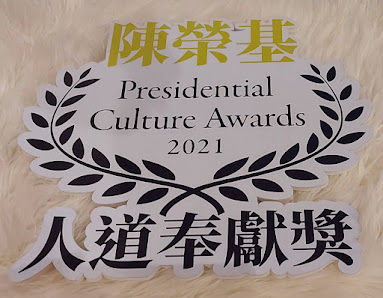


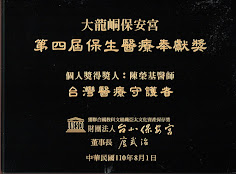

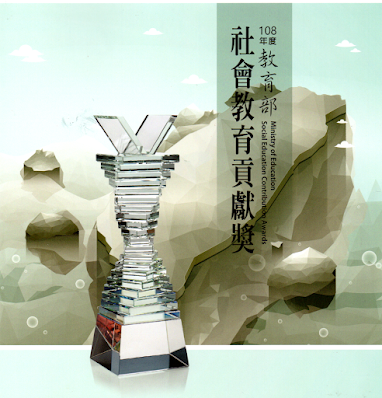

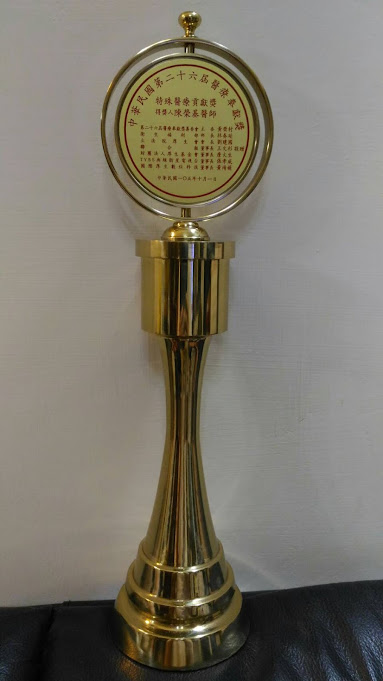
![2015周大觀基金會熱愛生命獎章<[請點下圖連署支持全責護理]>](http://3.bp.blogspot.com/-0XE7vtBmB6Y/VijWC6eVOtI/AAAAAAAAN84/lZpfif8QS5k/s1600-r/Fcover_final.jpg)

